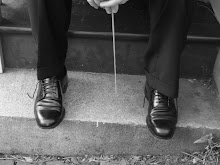Joseph L. Edwards February 10, 2009

Art has been used to symbolize some of humans' loftiest ideals and beliefs. The artist can represent through their craft ideals ranging from philosophy to religion. Those works that were to capture the embodiment of the Christian religion came to its height during the 16th century. Its influence on art is immeasurable, as well as culture.


For centuries, mankind has utilized statue in places of rest. These places, cemeteries, offer a lasting memory of past lives. The desire to make these places lavishly decorated has long been in our culture and in the European culture. Gravestones, mausoleums, and memorials are designed to reflect and individuals life, family, and personality. Some of the most engaging are those statues of religious figures. The young shepherd with the lamb and the virgin seem to dominate the repertory. The figure of angels is also a popular representation. They provide that link between humanity and the supernatural. The spirit as transcendence, guards the earthly body until the final resurrection.
The angel is often portrayed with its glance firmly on the earth, while the arms are open in heavenly acceptance. Like Bernini's Ecstasy of St. Theresa, the robes of the angels cover the head, arms, and legs. It leaves the hands exposed in an open embrace that has yet to complete contact. Her titled head echoes yet another work of Bernini, The Blessed Ludovia Albertoni. As in the pose of St. Theresa, her facial expression defies words. The angels are often depicted with a toned down version that alludes to spiritual satisfaction and confidence in her soul's final destination.
The case of a devastating event can also see angels adorn the monuments to the memory of those lost. The Pestsäule in Vienna marks the end of plague epidemic in 1679. It was worked on by several artists including Ludovico Burnacini, Tobias Kracker, and Johann Bendel. The column represents the prayer to cease the plagues by Vienna's Emperor Leopold I. The column pointing straight to the heavens, directs the viewer's gaze to a place of peace, comfort, and safety. The Pestsäule remains to this day the most treasured sculpture in the heart of the city.
Just as the angels guard over the souls at rest, the religious works of the Renaissance stand over humanity. They provide a shelter of beauty in difficult times. They remind us that there is something bigger than our self is. That is humanity and our ability to create such beauty that lasts for what seems like eternity. If not physically, these works will live on in our hearts

No comments:
Post a Comment